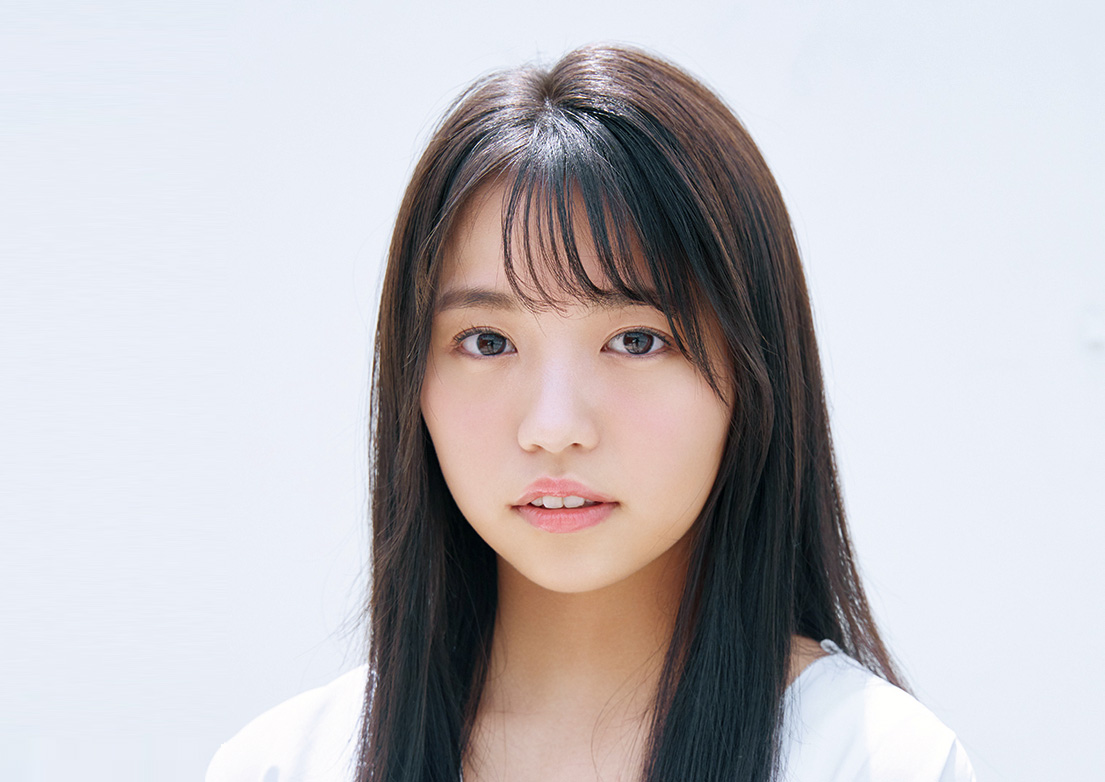
Kagoshima-born Yuno Ohara is active in various fields as a TV personality. She started her career in the entertainment industry when she was in primary school, and in 2014, her song Yokai Taiso Daiichi, the ending song for Yokai Watch, released as a part of Dream5, became a big hit. We asked Ohara, who has since been the subject of numerous TV dramas and photogravures, about her favourite places, things, and memories in Kagoshima.
With a strong desire to commute from her hometown, she lived in Kagoshima until high school graduation. When there was work, she would travel by plane from Kagoshima Airport to the shooting location. Her parents respected her wishes and even provided transportation to the airport.
Especially during the time when “Youkai Taisou Daiichi” was a hit, she had a hectic schedule, often returning home just for school tests.
In front of the Iso Seaside Bathing Beach, I often stop by “Nakagawa-ya,” a shop known for its “Jyanbo Mochi,” when I return to Kagoshima. They always remember my face and warmly greet me with a “welcome back,” creating a sense of comfort akin to being at home. By the way, in my photo book featuring shots taken in my hometown of Kagoshima, there are also photos taken at “Nakagawa-ya.” Not only that, but joining the fan club bus tour in 2023 and visiting together with fans is also a cherished memory.
In terms of ramen, it’s “Goroya.” I love this place so much that whenever I come back home, I make sure to visit, even if it means waiting in line for over 30 minutes.
Another place is the “Hirakawa Zoological Park.” Back in my student days, I had an annual pass and used to visit quite often. I particularly like polar bears, so I would often go there to see them.
Also, when I return during the New Year, I engage in a pilgrimage to three shrines. I enjoy visiting shrines so much that I even have a stamp book for shrine seals. Recently, I visited Kamafuta Shrine, Terukuni Shrine, and Kirishima Shrine. When I went to Kamafuta Shrine, I walked with a kettle on my head. Despite the windy weather by the sea, it went surprisingly well.
At the shrines, I prayed for my family’s health and reported that I would do my best in my work again this year.
Once I return, I immediately create a schedule and make sure to visit all the places I want to go.
Since I usually cook for myself, I always use miso and soy sauce that my mother sends from Kagoshima. I still incorporate Kagoshima’s seasoning into my dishes without fail. I often add coarse sugar to simmered dishes, creating a relatively sweet Japanese flavor.
Speaking of soy sauce, I was surprised by the saltiness when I first came to Tokyo, and back in elementary school, I used to carry a small bottle of Kagoshima soy sauce because of it.
I also love the somen sliding at the Tosenkyo Gorge, and I’m a big fan of commercially available noodle dipping sauce.
Moreover, when it comes to souvenirs, I often give a sweet potato shochu called “Daiyame.” The label is sleek and black, and my father sometimes takes it when visiting staff members we’re grateful to. While I’m not an expert on shochu, “Daiyame” has a fruity fragrance and is easy to drink.
I buy a lot of sweets. I love “Festivaro,” which is sold at Kagoshima Airport. Whenever my mother comes from Kagoshima, I always ask her to bring it. Another sweet recommendation is “Kasutadon.”
I also pick up bagged ramen from the airport, and it’s always well-received as a gift. When people think of Kyushu ramen, Fukuoka tends to be the focus, but personally, I believe Kagoshima ramen is the best!
I often travel as a reward to myself. When I get into the shooting phase of a project, it can get incredibly busy, sometimes without any private time for months. So, I often plan a trip as a reward, telling myself that I’ll go on vacation once it’s all done.
Kyoto is my favorite destination. I enjoy exploring shrines and temples, indulging in delicious meals, and just taking it easy.
Also, among the various islands I’ve had the opportunity to visit for work, I really like the Goto Islands in Nagasaki. It feels like time flows slowly there. Working can sometimes make you feel pressured by time, so it’s a place where I can reset and experience a calm and peaceful atmosphere.
I usually speak in standard Japanese, but occasionally during drama shoots, the Kagoshima intonation might slip out, and I end up giving a few NGs (no-goods or retakes) at those times. However, I cherish the Kagoshima dialect, so when I talk to my parents or immerse myself in it for a moment, I quickly switch back.
There are still many things in Kagoshima that I’d love to boast about. One thing I particularly love is the warmth of the people. I engage in activities with the thought of repaying, even a little, the support of the warm local residents who greet me with a “welcome back” when I return.
Not only with relatives but also with neighbors we’ve known since childhood, and many people who treat us like family. Living in Tokyo, I feel that such connections with people are rare, so I recognize that the warm environment of Kagoshima’s people has shaped who I am today.
Special interview